Time:2025-06-23
In the dynamic landscape of modern lighting, energy - efficient silicone neon strips have emerged as a game - changing solution, catering to a diverse range of applications while addressing the global need for sustainable and cost - effective illumination. These innovative strips blend advanced technology with environmental consciousness, offering a compelling alternative to traditional lighting sources. This article delves deep into the world of energy - efficient silicone neon strips, exploring their underlying technology, the advantages they bring, their wide - ranging applications, and the factors to consider when integrating them into various settings.
The Technological Underpinnings of Energy - efficient Silicone Neon Strips
LED Technology: The Heart of Efficiency
At the core of every energy - efficient silicone neon strip lies Light - Emitting Diode (LED) technology. LEDs are semiconductor devices that have revolutionized the lighting industry. Unlike traditional incandescent bulbs, which waste a significant amount of energy in the form of heat, LEDs convert a high percentage of electrical energy directly into light. This fundamental difference in operation is what enables energy - efficient silicone neon strips to consume far less power while delivering bright and consistent illumination. The continuous advancements in LED manufacturing techniques have led to the development of more efficient chips, capable of producing higher lumen outputs with lower power inputs.
Power Management Systems for Optimal Performance
To further enhance energy efficiency, these neon strips are equipped with sophisticated power management systems. These systems play a crucial role in regulating the electrical current flowing through the LEDs. One of the key techniques employed is Pulse Width Modulation (PWM). PWM works by rapidly switching the power supply to the LEDs on and off at a high frequency. By adjusting the duty cycle (the proportion of time the power is on), the average power delivered to the LEDs can be precisely controlled. This not only allows for features such as dimming but also ensures that the LEDs operate at their most efficient levels, minimizing energy wastage. Additionally, some advanced power management systems can adapt to changes in ambient light conditions, further optimizing energy consumption.
Silicone Encapsulation: Durability and Light Diffusion
The silicone casing that encloses the LEDs in these strips serves multiple purposes. Silicone is a highly durable and flexible material. It provides excellent protection to the internal components, safeguarding them from environmental factors such as moisture, dust, and physical damage. This is particularly important in applications where the neon strips may be exposed to harsh conditions, such as outdoor signage or industrial settings. Moreover, the silicone material has unique light - diffusion properties. It evenly scatters the light emitted by the LEDs, creating a soft and attractive glow similar to traditional neon lights. This diffusion not only enhances the aesthetic appeal of the strips but also helps in reducing glare, making the illumination more comfortable for the eyes.
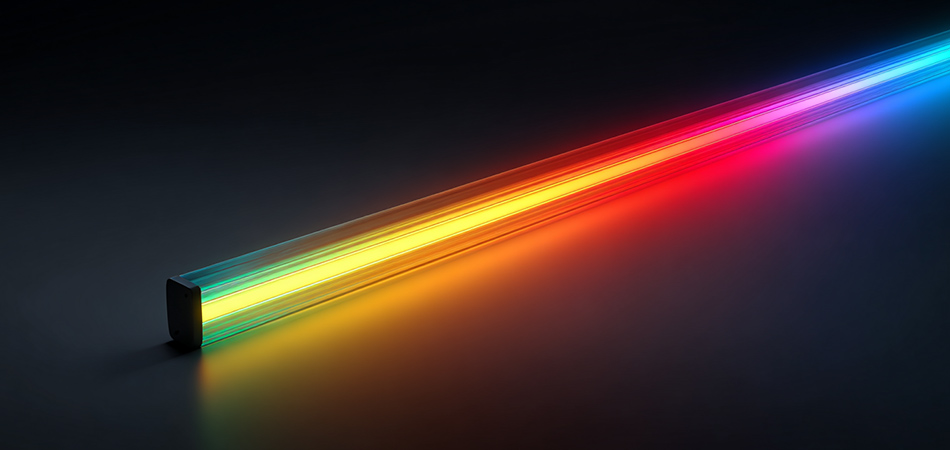
Advantages of Energy - efficient Silicone Neon Strips
Energy Savings and Cost - Effectiveness
One of the most significant advantages of energy - efficient silicone neon strips is the substantial reduction in energy consumption. In an era where energy costs are on the rise and environmental concerns are at the forefront, these strips offer a practical solution. By consuming less power, businesses and homeowners can significantly cut down on their electricity bills. For example, in commercial establishments with large - scale lighting requirements, such as retail stores or shopping malls, the cumulative energy savings over time can be substantial. Moreover, the long - term cost - effectiveness is further enhanced by the fact that these strips have a longer lifespan compared to traditional lighting options, reducing the need for frequent replacements and associated maintenance costs.
Environmental Sustainability
In addition to the economic benefits, energy - efficient silicone neon strips contribute to environmental sustainability. The reduced energy consumption directly translates to a lower carbon footprint. Since a significant portion of electricity generation globally still relies on fossil fuels, by using these energy - efficient strips, consumers are indirectly reducing greenhouse gas emissions. Furthermore, the use of recyclable silicone materials in the construction of these strips aligns with the principles of a circular economy. At the end of their useful life, the silicone casings can be recycled, minimizing waste and conserving natural resources.
Design Flexibility
The flexibility of energy - efficient silicone neon strips is a major advantage. The soft and pliable silicone material allows the strips to be easily bent, shaped, and contoured to fit various surfaces and design requirements. They can be used to create intricate patterns, outlines, and decorative elements in both indoor and outdoor spaces. Whether it's wrapping around a curved display shelf in a store, outlining the edges of a building facade, or creating a unique lighting installation in a residential living room, these strips offer endless design possibilities. Additionally, they are available in a wide range of colors and can even be programmed to change colors or create dynamic lighting effects, further enhancing their versatility.
Durability and Longevity
Thanks to the robust construction and high - quality materials used, energy - efficient silicone neon strips are highly durable. The silicone encapsulation protects the LEDs from external factors, ensuring stable performance over an extended period. This durability is not only beneficial in terms of reducing maintenance and replacement costs but also in applications where reliability is crucial. For instance, in outdoor advertising signage, where the lighting needs to be operational day and night, all year round, the long - lasting nature of these neon strips ensures that the message remains visible and effective.
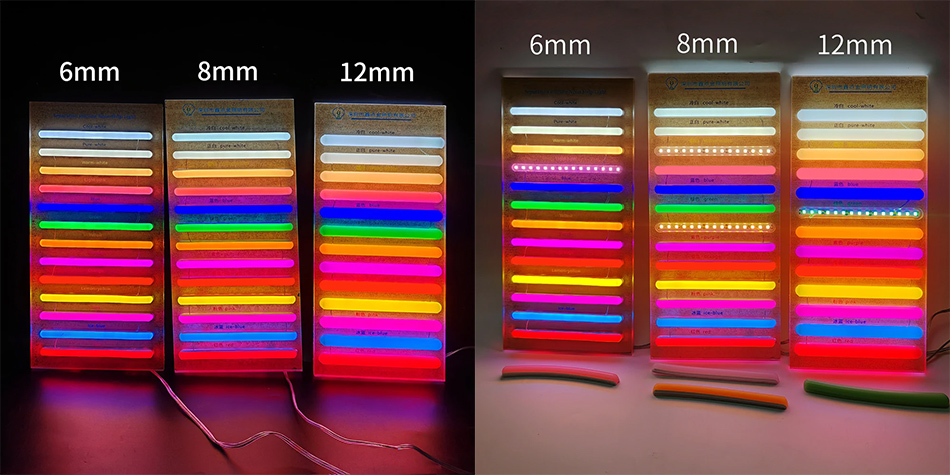
Applications of Energy - efficient Silicone Neon Strips
Commercial Applications
Retail Displays
In the retail sector, energy - efficient silicone neon strips are extensively used to create eye - catching product displays. They can be installed along the edges of shelves to highlight merchandise, around product showcases to draw attention, or used to create dynamic lighting effects that change with the seasons or promotions. For example, a clothing store might use colored neon strips to outline the racks of new arrivals, making them stand out from the rest of the inventory. The bright and energy - efficient illumination provided by these strips can make products more appealing to customers, potentially increasing sales.
Office Spaces
Office environments also benefit from the use of energy - efficient silicone neon strips. They can be used for general lighting, providing a bright and comfortable workspace while reducing energy costs. In addition, they can be used for accent lighting, such as illuminating artwork on the walls or creating a warm glow in break rooms. The ability to customize the lighting using dimming or color - changing features can also help in creating a more pleasant and productive work environment.
Hospitality Industry
In hotels, restaurants, and cafes, energy - efficient silicone neon strips play a crucial role in setting the ambiance. In restaurants, they can be used to create a cozy and inviting atmosphere, perhaps by lining the edges of booths or highlighting the bar area. In hotels, they can be used in the lobby, corridors, and guest rooms to provide a modern and stylish look. The energy - saving aspect is also particularly important in the hospitality industry, where lighting is often used for long hours, and reducing operating costs is a key consideration.
Residential Applications
Interior Decor
At home, energy - efficient silicone neon strips offer a wide range of possibilities for interior decor. They can be used to add a touch of elegance and style to any room. For example, they can be installed under cabinets in the kitchen to provide task lighting while also creating a modern look. In the living room, they can be used to backlight a TV or create a unique lighting effect behind a sofa. The ability to choose from different colors allows homeowners to match the lighting to their existing decor or create a new theme.
Outdoor Lighting
For outdoor spaces, these neon strips are also an excellent choice. They can be used to illuminate pathways, gardens, and patios. Their durability and weather - resistance make them suitable for outdoor use, and they can add a warm and inviting glow to the outdoor living area. Whether it's outlining the edges of a garden bed or creating a soft light around a swimming pool, energy - efficient silicone neon strips can enhance the beauty and functionality of the outdoor space.
Architectural and Landscape Applications
Building Facades
Architects often use energy - efficient silicone neon strips to enhance the visual appeal of building facades. These strips can be used to highlight architectural features, such as columns, arches, or windows. They can also be used to create dynamic lighting effects that change with the time of day or special events. For example, a landmark building might use neon strips to create a stunning nighttime display, making it a focal point in the city skyline.
Landscape Lighting
In landscape design, these neon strips are used to bring out the beauty of outdoor landscapes. They can be used to light up trees, shrubs, and other plants, creating a magical and inviting atmosphere. They can also be used to illuminate walkways, steps, and outdoor structures, providing both safety and aesthetic value. The flexibility of the strips allows for creative installations, such as wrapping them around tree trunks or using them to create unique patterns on the ground.
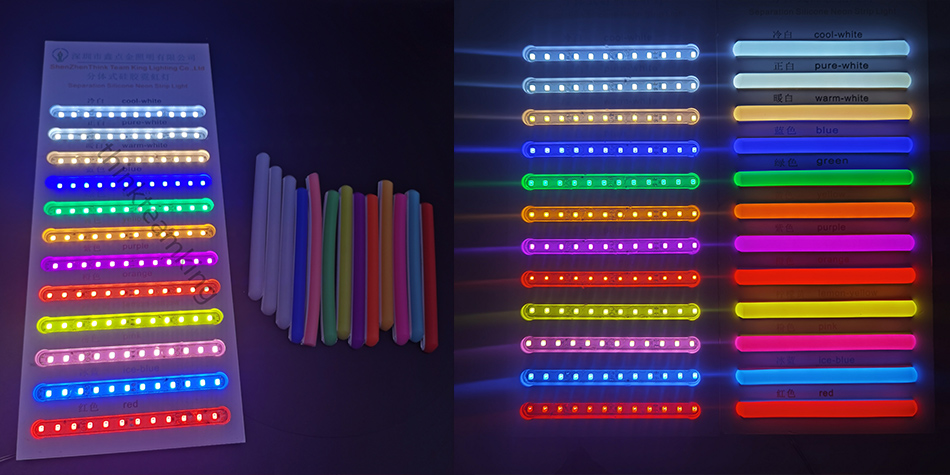
Factors to Consider When Choosing Energy - efficient Silicone Neon Strips
Energy Efficiency Ratings
When selecting energy - efficient silicone neon strips, it is essential to pay attention to their energy efficiency ratings. These ratings indicate how efficiently the strips convert electrical energy into light. Look for strips with high - efficiency ratings, as they will consume less power and provide better long - term cost savings. Energy - efficiency certifications, such as ENERGY STAR in some regions, can also be a useful indicator of a product's performance in this regard.
Color Options and Lighting Effects
Consider the color options and lighting effects available with the neon strips. Different applications may require different colors. For example, warm colors like orange and yellow can create a cozy and inviting atmosphere, while cool colors like blue and green can give a more modern and refreshing look. Some strips also offer the ability to change colors or create dynamic lighting effects, such as fading or flashing. Evaluate whether these features are necessary for your specific application.
Durability and Weather Resistance
If the neon strips will be used in outdoor applications or in environments with harsh conditions, durability and weather resistance are crucial factors. The silicone material should be able to withstand exposure to sunlight, rain, extreme temperatures, and other environmental elements without deteriorating. Check the product specifications for information on its weather - resistance capabilities and look for strips that are specifically designed for outdoor use if needed.
Installation and Compatibility
Ease of installation is another important consideration. Look for neon strips that come with clear installation instructions and all the necessary hardware. Consider whether the strips are compatible with your existing lighting system or if they require additional components, such as power supplies or controllers. Compatibility issues can lead to installation problems and may affect the overall performance of the lighting system.
Supplier Reputation and Customer Support
Choose a reliable supplier with a good reputation for quality products and excellent customer support. Read customer reviews and testimonials to get an idea of the supplier's track record. A reputable supplier will not only provide high - quality neon strips but also offer after - sales support, such as technical assistance, warranty coverage, and prompt replacement of defective products.
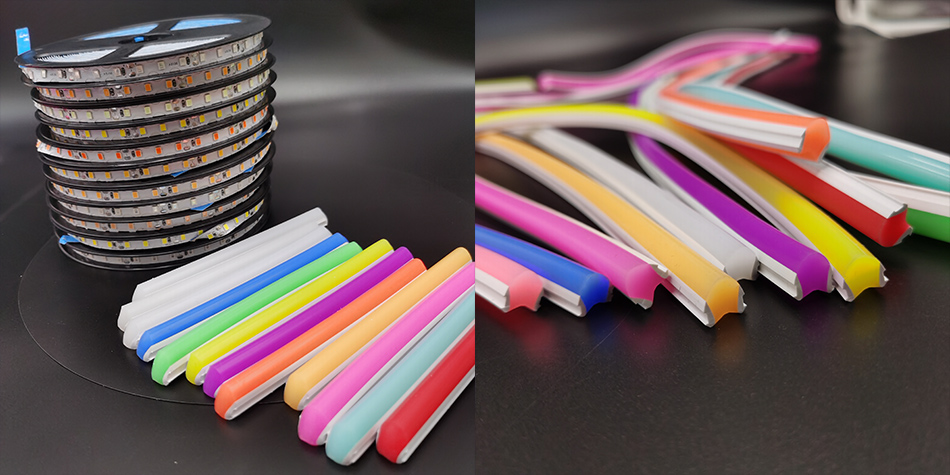
Installation and Maintenance of Energy - efficient Silicone Neon Strips
Installation Process
The installation of energy - efficient silicone neon strips typically involves a few basic steps. First, carefully measure the area where the strips will be installed to determine the length of the strips required. Next, clean the surface where the strips will be attached to ensure a proper bond. Many neon strips come with adhesive backing, making the installation process relatively straightforward. Simply peel off the protective backing and firmly press the strip onto the surface. If the strip needs to be bent or shaped, do so gently to avoid damaging the internal components. Finally, connect the strip to the appropriate power supply, following the manufacturer's instructions carefully.
Maintenance Requirements
Maintenance of energy - efficient silicone neon strips is relatively minimal. Regularly inspect the strips for any signs of damage, such as cracks in the silicone casing or loose connections. If any issues are detected, address them promptly to prevent further damage. In most cases, if an LED fails, the entire strip may need to be replaced, depending on the design. However, due to their long lifespan, such replacements are infrequent. Keep the strips clean by gently wiping them with a soft, dry cloth to remove dust and dirt, which can affect the light output over time.
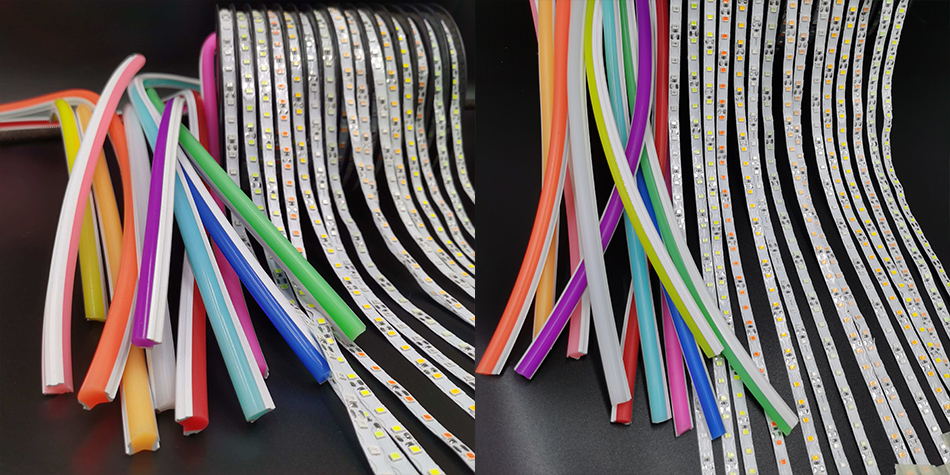
Market Trends and Future Outlook for Energy - efficient Silicone Neon Strips
Growing Demand for Sustainable Lighting
The demand for energy - efficient and sustainable lighting solutions, such as silicone neon strips, is on the rise. As consumers become more environmentally conscious and energy costs continue to increase, there is a growing preference for lighting products that offer both energy savings and environmental benefits. This trend is expected to continue, driving further innovation and growth in the market for energy - efficient silicone neon strips.
Technological Advancements
Ongoing research and development in the lighting industry are likely to lead to further technological advancements in energy - efficient silicone neon strips. This may include the development of even more efficient LED chips, improved power management systems, and enhanced durability. Additionally, new materials and manufacturing techniques may be introduced, further improving the performance and cost - effectiveness of these strips.
Integration with Smart Home and Building Systems
The future of energy - efficient silicone neon strips may involve greater integration with smart home and building systems. This could enable features such as remote control via smartphones or voice - activated commands, as well as integration with other smart devices, such as motion sensors or ambient light sensors. Smart lighting systems can optimize energy usage by adjusting the brightness and color of the neon strips based on the surrounding environment and user preferences.
Conclusion
Energy - efficient silicone neon strips represent a significant advancement in the lighting industry. With their combination of energy savings, environmental sustainability, design flexibility, and durability, they are well - suited for a wide range of applications, from commercial and residential settings to architectural and landscape projects. By understanding the technology behind these strips, the advantages they offer, and the factors to consider when choosing and installing them, consumers and businesses can make informed decisions to enhance their lighting solutions while contributing to a more sustainable future. As the market continues to evolve and technology improves, energy - efficient silicone neon strips are set to play an even more prominent role in the world of illumination.